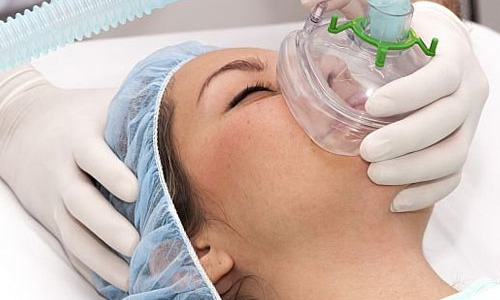As new technologies and materials become available, medical devices and components continue to evolve in the rapidly changing healthcare market. Over the past decade, devices ranging from surgical tools to respiratory masks, and even straightforward components like tubing and connectors, have experienced dramatic transformations in their look and functionality. Designers and manufacturers alike have experienced a great deal of success in improving functionality and appearance through the use of thermoplastic elastomer compounds (TPEs). As new technologies and materials become available, medical devices and components continue to evolve in the rapidly changing healthcare market. Over the past decade, devices ranging from surgical tools to respiratory masks, and even straightforward components like tubing and connectors, have experienced dramatic transformations in their look and functionality. Designers and manufacturers alike have experienced a great deal of success in improving functionality and appearance through the use of thermoplastic elastomer compounds (TPEs). TPE form and function TPEs are specialised thermoplastic compounds that provide many functional capabilities, such as slip resistance for surgical tools even when the user wears gloves. When the material is overmoulded onto rigid thermoplastics, a non-slip grip and/or a ‘soft-touch’ feel is created, which significantly enhances the ergonomics of a device. According to Josh Blackmore, RTP Company’s global healthcare manager, the trend for medical device designers is to use softer TPEs in the Shore A45-60 range, which allows the user to form a depression and improve the mechanical advantage, ergonomics, and tactical control. TPEs also offer a range of product differentiation possibilities. “TPEs can enhance perceived value and provide dramatic visual presence through the use of unique shapes and colours,” says Blackmore. “Furthermore, TPEs can be an excellent cost competitive alternative to other medical grade materials such as thermoset rubber and engineered polymers.” Why TPEs are an excellent choice for medical devices There are many reasons why TPEs are an excellent choice for medical devices. Designers and manufacturers often use TPEs to capitalise on the non-slip grip and/or a ‘soft-touch’ feel they provide. This technique is particularly useful for surgical tools and electrocautery cutters, improving the instruments’ grip and comfort level for extended periods of use. TPEs can also be used as a replacement for other materials. For example, respiratory care masks, which are typically made from silicone rubber, can be made from TPEs moulded with an engineered polymer substrate, providing a high degree of clarity and low tack for contact with the patient’s skin. In addition, by utilising a two shot technique, a part can be produced in one step, which reduces assembly costs and cycle time. Another great example is that of extruded TPEs, which are used as replacements in tubing applications to replace PVC, thereby eliminating the use of phthalate plasticizers. If allergic reactions are of concern, TPEs are an excellent latex-free and PVC-free material option. In fact, the appearance and functionality of a device is more rugged and durable simply by overmoulding TPEs around edges and corners. This simple enhancement improves the actual and perceived life of the device itself, and ultimately, the marketability of the product. Proper material selection eases path to approvals Of course, designers and manufacturers must also take great care to ensure the safety of the medical devices they produce. Material selection is crucial; not only are physical properties important, such as the hardness of the material for good strength and flexibility (30 to 80 Shore A is recommended for most medical devices), it makes sense to select compounds that are pretested for biocompatibility. In response to this need, some compounders like RTP Company offer TPE compounds that have been pretested for cytotoxicity, irritation, and acute systemic toxicity in compliance with ISO 10993-5/10/11. Compounds such as biocompatible styrenic-based TPEs offer advantages such as gamma and EtO sterilisabiliy. “By selecting TPEs that are biocompatible, healthcare device designers and engineers have already taken a step toward a smoother regulatory approval process,” says Blackmore. The advantages of colour Another consideration is the colour of the selected material. TPE compounds can be naturally translucent and neutral in colour, which is appropriate, and often preferred, for use in many Class l and Class II medical devices. However, TPEs are fully colourable using biocompatible pigments and colour masterbatches. Colour can be important for medical devices in healthcare settings, as it can be used for accurate tool identification and for safety indicators such as on/off switches. In retail settings, colour is often used for product differentiation and branding of medical devices, providing shelf appeal and increased visibility. “Biocompatible thermoplastic elastomer compounds have the unique combination of versatile physical properties, processing flexibility, and aesthetic possibilities that allow for greater innovation,” explains Blackmore. “And innovation ultimately leads to improved products and procedures that advance medical treatment.” Source:https://www.medicalplasticsnews.com/news/flexi-time/
